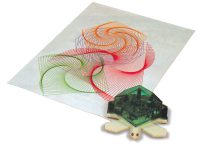
Anders Jonas Ångström (1814-1874)
On June 21, 1874, Swedish physicist Anders Jonas Ångström passed away. Anders Ångström is considered one of the founders of the science of spectroscopy. His pioneering use of spectroscopy is recognized in the name of the angstrom, a unit of length equal to 10-10 metre.
Youth and Education
Anders Ångström was born into a wealthy, upper class family in Logodo, Medelpad, Sweden, to Johan Ångström, a preacher at Lögdö Ironworks and later Assistant Vicar in Sätna in Medelpadand. After schooling in Härnösand he moved to Uppsala in 1833 and was educated at Uppsala University, where in 1839 he became docent in physics. In 1842 he went to the Stockholm Observatory to gain experience in practical astronomical work, and the following year he was appointed keeper of the Uppsala Astronomical Observatory.
Fluctuations of Magnetic Intensity
Intrigued by terrestrial magnetism he recorded observations of fluctuations in magnetic intensity in various parts of Sweden, and was charged by the Stockholm Academy of Sciences with the task, not completed till shortly before his death, of working out the magnetic data obtained by the Swedish frigate “Eugenie” on her voyage around the world in 1851 to 1853.
Measuring Thermal Conductivity
Anders Ångström’s most important work concerned heat conduction and spectroscopy. He devised a method of measuring thermal conductivity, showing it to be proportional to electrical conductivity. In his optical researches, Optiska Undersökningar, presented to the Royal Swedish Academy of Sciences in 1853, he not only pointed out that the electric spark yields two superposed spectra, one from the metal of the electrode and the other from the gas in which it passes, but deduced from Leonhard Euler’s theory of resonance that an incandescent gas emits luminous rays of the same refrangibility as those it can absorb. This statement, as Sir Edward Sabine remarked when awarding him the Rumford medal of the Royal Society in 1872, contains a fundamental principle of spectrum analysis, and though overlooked for a number of years it entitles him to rank as one of the founders of spectroscopy .[5]
The Solar Spectrum
In 1858, he succeeded Adolph Ferdinand Svanberg in the chair of physics at the University of Uppsala. From 1861 onward, he paid special attention to the solar spectrum. His combination of the spectroscope with photography for the study of the Solar System resulted in proving that the Sun’s atmosphere contains hydrogen, among other elements (1862), and in 1868 he published his great map of the normal solar spectrum in Recherches sur le spectre solaire (“Researches on the solar spectrum”), including detailed measurements of more than 1000 spectral lines, which long remained authoritative in questions of wavelength, although his measurements were inexact by one part in 7000 or 8000 angstrom, owing to the metre he used as a standard being slightly too short. However, Anders Ångström suspected that their work contained a systematic error, and it was not until 1884, 10 years after Ångström’s death, that his colleague Robert Thalén published results that corrected the wavelengths of some lines by as much as an angstrom.
Further Work in Spectroscopy
Ångström was the first, in 1867, to examine the spectrum of the aurora borealis. Using a prism to examine spectra, Ångström was able to disprove the then-accepted theory that the northern lights originated from reflected sunlight through sky-borne ice crystals. He demonstrated that the characteristic bright line in the yellow-green light at 5577 angstroms was due to electrically excited oxygen atoms.[2] The Swedish scientist also discovered the relationship between the Fraunhofer lines in the solar spectra and the discontinuous spectra of hot gases. His pyrheliometer, designed for the direct measurement of incident solar radiation, was adopted as an official instrumental standard in 1905.[2,4]
Awards and Honors
As a modest, reserved person, despite his important scientific work, Ångström was not immediately recognized neither abroad nor even in his own country. In 1867, he was appointed secretary of the Royal Society of Sciences in Uppsala. Ångström was also a member of the Stockholm Academy, and in 1870, became a Fellow of the Royal Society of London from which he received the prestigious Rumford Medal (1872).[2] Anders Ångström died in Uppsala on 21 June 1874.
The Ångström IUnit
The Ångström unit (1 Å = 10−10 m) in which the wavelengths of light and interatomic spacings in condensed matter are sometimes measured are named after him. The unit is also used in crystallography as well as spectroscopy. His son, Knut Ångström (1857-1910), was also known for his research at Uppsala University on solar radiation, the radiation of heat from the Sun and its absorption by the Earth’s atmosphere.
Tonio Buonassisi, 2. The Solar Resource, [7]
References and Further Reading:
- [1] Anders Jonas Ångström, Swedish physicist, at Britannica Online.
- [2] Anders Jöns Angstrom, in Science, Optics, and You, Pioneers in Optics.
- [3] Anders Jöns Angstrom at Wikidata
- [4] Joseph von Fraunhofer and the Solar Spectrum, SciHi Blog
- [5] Sir Edward Sabine and the Earth’s Magnetic Field, SciHi Blog
- [6] Ångström, A.J. (1855). “Optical researches”. Philosophical Magazine. 4th series. 9: 327–342.
- [7] Tonio Buonassisi, 2. The Solar Resource, MIT 2.627 Fundamentals of Photovoltaics, Fall 2011, MIT Open COurseware @ youtube
- [8] Maier, C.L. (1970). “Ångström, Anders Jonas”. Dictionary of Scientific Biography. Vol. 1. New York: Charles Scribner’s Sons. pp. 166–167
- [9] Timeline of spectroscopists, via DBpedia and Wikidata





